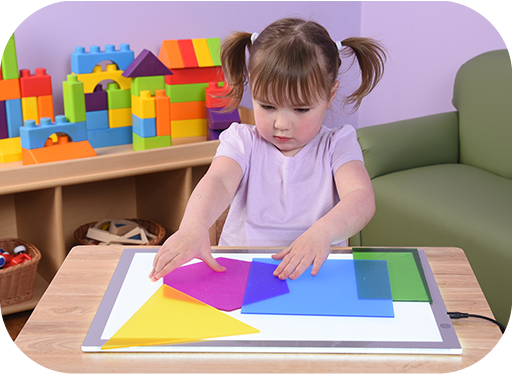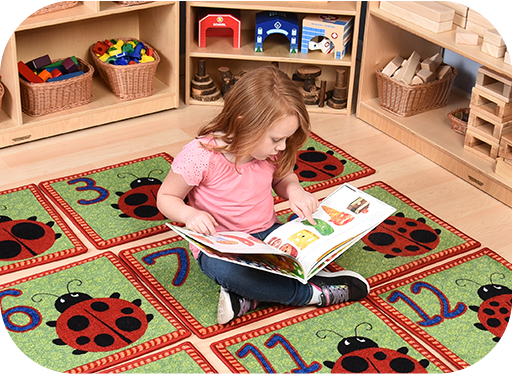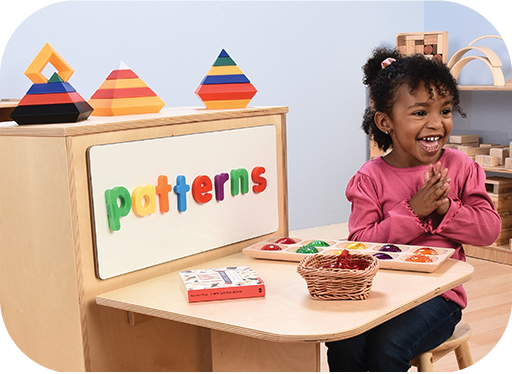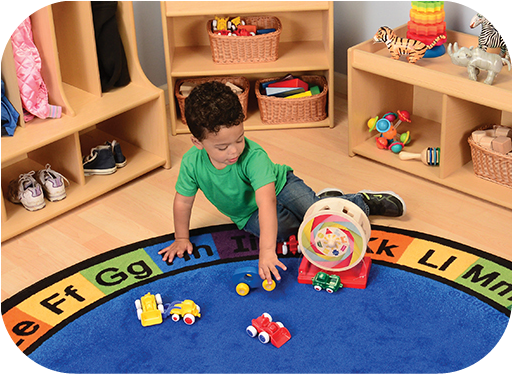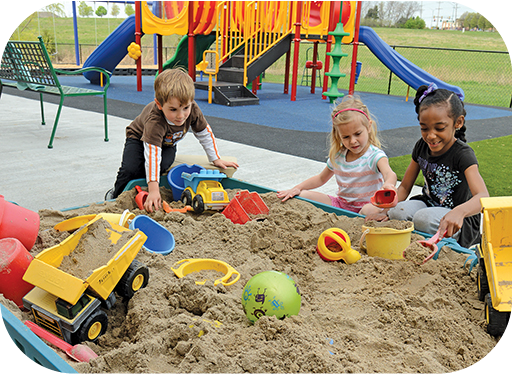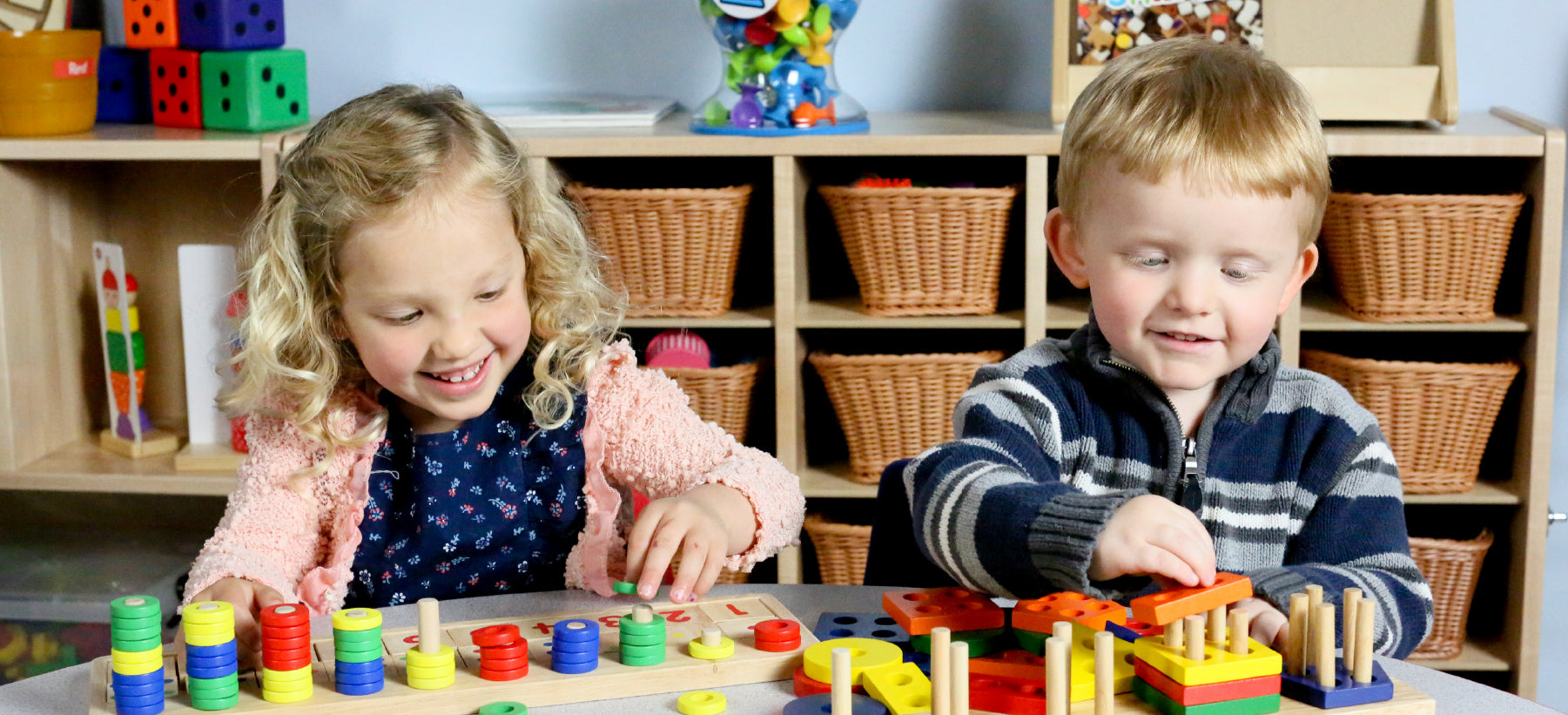
Quality Early Educators Individualize for each Child
Teachers plan individualized curriculum in their classrooms to meet the needs of each child. First, they genuinely get to know the children in their classroom. They learn about their interests and needs, along with their developmental levels. They look at screenings and assessments, input from parents, and any other information that helps inform them about the children in their classroom. With all this information, they plan experiences based on what children need, trying to move children to the next level of development. With this knowledge, teachers carefully select items to use in their classrooms that are made of quality materials, serve multiple purposes, and will stand up to lots of little hands.
Quality, as it relates to classroom materials, includes sturdy items that have color and textures and provide interest to children. Wooden shelves bring a natural element to classrooms and are sturdy, last for years, and resist breaking over the long haul. Clear plastic totes are functional and clean easily but baskets, whether made from natural materials or cleanable wicker-look materials, add warm touches and variety to classroom organization. In choosing individual items, teachers also look for quality. Wooden puzzles last longer than cardboard pieces. Items with self-contained storage allow pieces to stay with the set longer. Rugs made for classrooms meet fire code requirements. Teachers know to choose materials from companies that specialize in early childhood equipment to ensure the materials meet all safety requirements.
Teachers also must choose materials that will work for multiple ages and developmental levels. Often working on limited budgets, teachers know how to pick items with various functions. Many open-ended materials can be adapted for different levels based on the questions teacher pose and ways they are used. A group of multi-colored counters can be used to count, add and subtract, pattern, and sort. Natural materials can be classified by type and origin then documented through drawings. Building materials in open containers allow children to use them in different ways depending on their skill level.
Classroom materials need to survive being used by multiple children daily. Solid materials like wood fair better than plastic or cardboard pieces that can break easily. Toys with batteries are avoided and replaced by open-ended materials so play can be the focus rather than the item. Dolls and dress-up clothes must endure being cleaned and laundered on a regular basis.
Teachers may face difficulty getting the materials they want in their classrooms due to strict budgets, but they do know how to make the best choices to utilize the materials they have. They individualize curriculum, using various materials, to meet each child’s needs and scaffold them to the next level. They choose quality materials that can stand the test of time and open-ended products to meet varying developmental levels. They trust that early childhood resources can provide the quality they need.
Constructive Playthings – We’re your high-quality, early learning resource.


